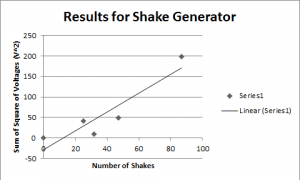In our Sustainability, Energy and Technology class we experimented with photovoltaic cells and phone flashlights. For our experiment we used the phone flashlight from a iPhone 5S. Our results may be slightly skewed because there was some light in the room not coming from the phone flashlight, if the experiment were to be redone it would be better to redo it in a room that was totally dark so we could have a more accurate reading. We did the first part of the experiment to see how much the distance away from the cell affected the results and then we used different color films to see if the color affected the amount of light that passed through. This is important to sustainability because solar power may be the next step towards a greener world.
With Not light On the Cell Average Voltage:0.0315
Average Voltage from 1 cm Away: 0.3741
Average Voltage from 10 cm Away: 0.1136
Average Voltage from 15 cm Away: 0.0624
These results were expected because as the phone light moved farther away from the cell the cell collected less voltage.
The phone was held 1 cm away from the cell when we used the different color films to see if the color of the film effected the results.
Green Filter Average Voltage- 0.268
Blue filter Average Voltage- 0.332
Red Filter Average Voltage- 0.191
These results were harder to expect, because it hard to judge to opacity and ability to pass light through it.

